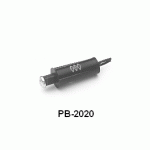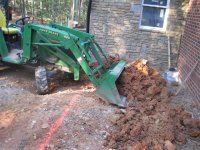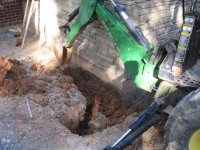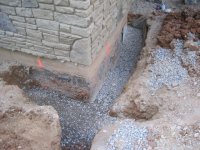Why is it that the simplest topics can results in a book of information... I'll try some tidbits and I'm sure everyone can piece it all together.
The plunger switch that Obed linked to is used when it's difficult or risky to use the two piece reed switch and magnet. The reed switch needs a magnet in one side of the moving thing (door or window) and the wired sensor (the sealed reed switch) in the other. The plunger is a "one side only" device. Drilling up into your $800 Anderson window and hoping you don't pop it

is not fun, plunger looks good in that situation. Now the datasheet doesn't quite tell you if it's a sealed switch or not. It talks about one of the switches being a "reed and magnet combination", but I've seen some reed like switches that were not sealed. Note that the total travel is .25", and the pre-travel is about .110". With a window that closes tight, no problem. With the deadbolt that tight travel might be hard to adjust, and could be different if you changed out the door hardware. When the hardware goes on the door, often all the trim wood is on. Now you could leave that piece off, but then you've got the extra step of putting it on later and then painting it. Doable, just more steps. Most plunger switches expect to be fully depressed in situations like a window or the hinge side of a door, and as such have fairly small travel distances they can work with.
We had an industrial plant that had non sealed plungers installed on all their doors. When they were about 5 years old they got flakey. Exposed contact non sealed low current switches are to be avoided IMHO.
Regarding the proximity switch: Alarm systems have power available for sensors that need them. The people that make that GRI plunger make a great water on the floor sensor that needs power. Unfortunately, there is no standard voltage for this but the most common ones are 12 VDC, 24VDC, and 24VAC. Video camera systems have the same situation. And when you see 12 or 24 volts, sometimes that really means 13.8 and 27.6 volts because it's the voltage on a battery. The current consumption of virtually of the these sensor (including smoke and motion) is so low that for residential use, the voltage drop even with small 24 gauge wire is not a problem. A Radio Shack motion detector I took apart once was rated at 12V. It regulated the 12V down to 5V to run everything. There was a little tiny (TO-92 package,m LM78L05 for the geeks) part that did this. If you put 13.8 volts into it, that part was too hot to touch and I suspect the lifetime of the sensor would be affected. At 12V, you could kinda touch it. At any rate, this is why you often see a 10 to 30V DC power specification on things- they can work with most systems. The 24 VAC is very much in the minority because you can't easily battery back it up. Everything I do is 12 volts DC, it seems to be the most common.
The biggest challenge with that particular proximity sensor pointed to in this thread is that it's a 1.5mm (or about .06") range. So like the plunger (but worse) getting it at the correct distance is rough, and with only 60 mils of range I can see where it might work one day and not the next as the door frame, door, house, etc. move around with use and humidity. Note also that the proximity sensor had a direct transistor output such as the NPN output. Some sensors do this to save money, space and power compared to a sensor with a relay (even a small reed relay). It is also how some senors can run on such a wide voltage range- the circuitry in it draws very little power and there is no coil to drive in an output relay. But this means you have to wire things up just right- you can't "flop" the wires for the switch. You also have to be sure that type of output will work with your alarm system since it's not just a floating contact switch. Doable, but another detail to watch.
The entire term proximity sensor covers a huge range of devices. The sited web page touched on a lot of them. Some are good for static sensing (what is needed for the deadbolt) some good for dynamic sensing such as the pick up coil for a tractor flywheel so the engine controller knows where things are. I won't go further here, the main point is that the term "proximity sensor" is as broad in coverage as the term "metal screw".
If I was going to hack this, I'd drill a hole in the end of the deadbolt plunger and put in a magnet. Then I'd take a door sealed reed switch and use that in the frame of the door. The door reed switch is available in gap ranges ranges from .5 to 1.25 inches, so getting the spacing right is not as critical as a plunger. I'd use the .5" gap. One would still have to play with it a lot to get good results as opposed to when one puts this in a door and when the door opens you know you have a HUGE gap between the magnet and the sensor.
I agree it would be a way cool feature to have. I have two and a half reasons why I did not do it (and this is just me). The first is it's hard to get the gap/spacing right, and adjusting it requires working with the trim removed and may involve messing and repairing drywall. The second is that when I looked at all the exterior doors in my house, there was everything from just two 2x6's with clear access to 7 2x6's and a lot of wallowing out that would have to happen. Some doors had the area so close to a corner it would be hard to do. The "half" reason is as simple as a "fog of construction" reason. This would be a huge time sink and involve close interaction with trim carpenters and painters both of whom you'd be asking to change how they do things. I also did not pursue it because while this is something a home owner can do, for a trade to do it (i.e. the "low voltage dude" who does alarm and automation), they would have to charge more money (due to the extra steps and site visits) than most would be willing to pay.
Seems like most houses only use a small number of doors on a daily basis, so a compromise might be just do this on the garage door deadbolt and maybe another going outside. But I would argue that if that is the case, then put the wires in and do this as a retrofit when the fog has cleared. You could also block for easier drywall repair and do some pre-wallowing out for the plunger.
So much to do, so little time...

.
Pete







